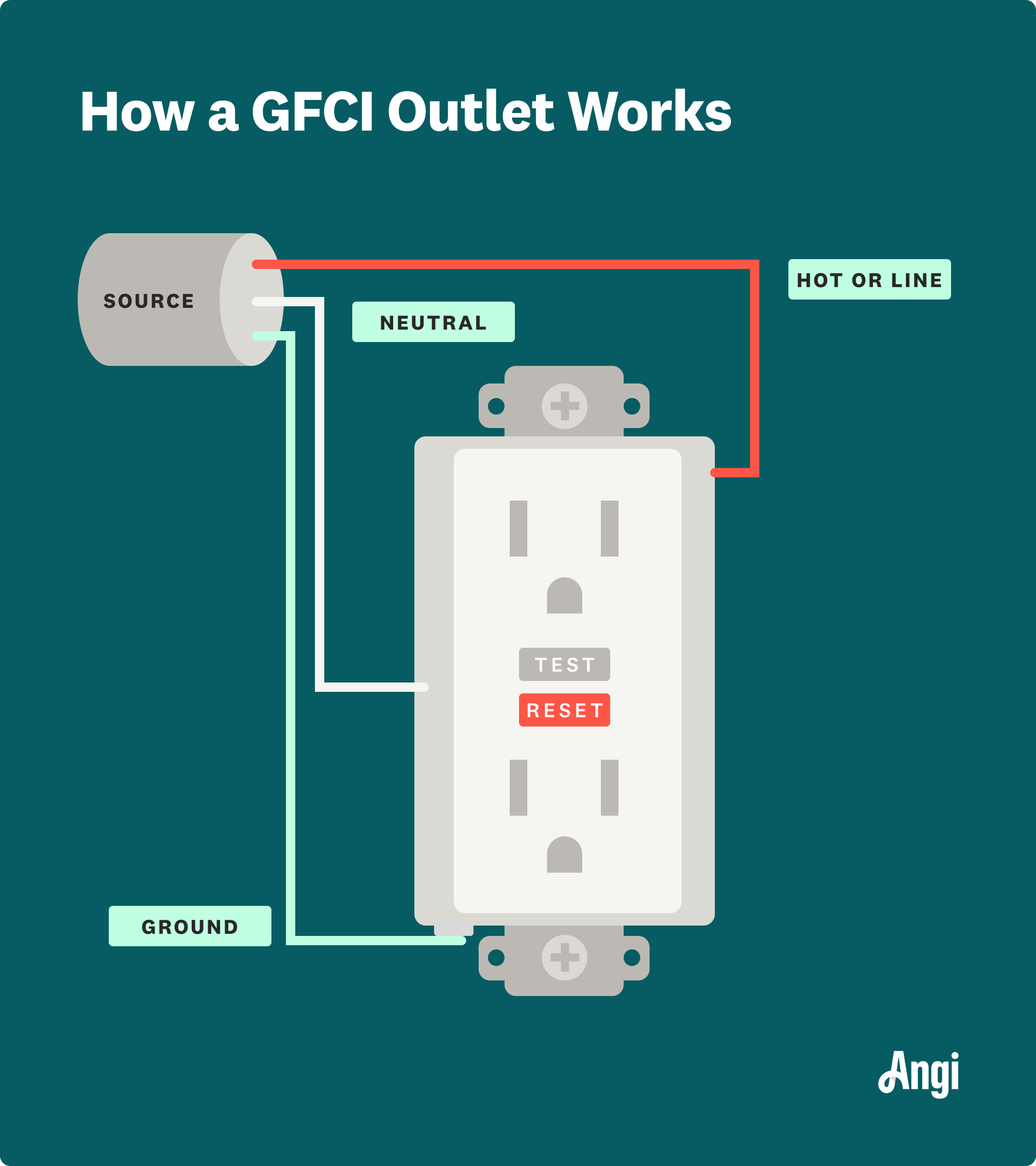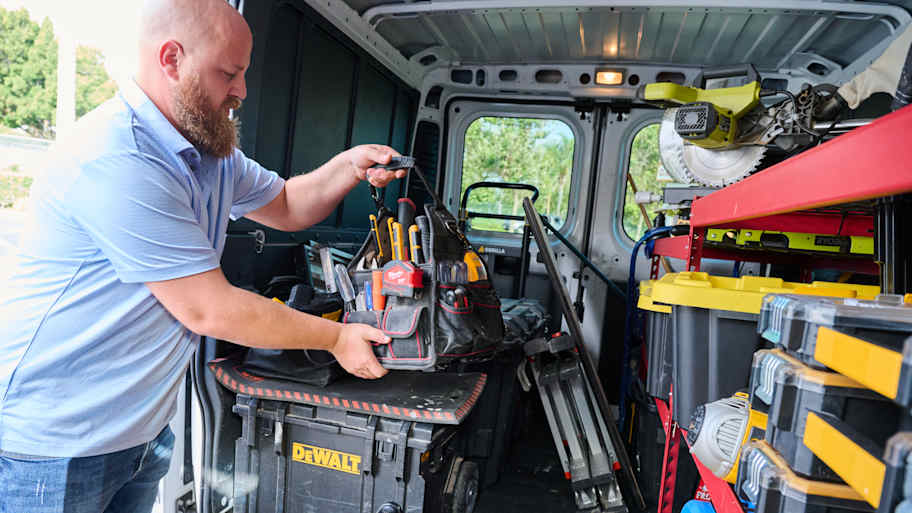How to Reset a GFCI Outlet: 4 Troubleshooting Methods
Don’t pull the plug on your safety outlets until you’ve done some troubleshooting


If your dishwasher suddenly stops working in the middle of a cycle, the GFCI outlet may have cut the power to the appliance. No problem, right? You simply need to push the red reset button to get things going again. But, if this doesn’t restore power, you’ll need to work out why your GFCI outlet is not working and take steps to address the problem. Before calling out an electrician, learn how to reset GFCI outlets with these DIY troubleshooting techniques.
What Are GFCI Outlets?

Ground Fault Circuit Interrupter (GFCI) outlets monitor the currents traveling through the electrical circuit. If the GFCI detects a problem, it breaks the circuit and cuts the power running to the outlet. This safety measure prevents the risk of electric shock. GFCI outlet types are common in U.S. homes and are legally required when an outlet is within 6 feet of a water source.
There are two buttons on GFCI outlets—TEST and RESET. The test button lets you check that the GFCI outlet is working correctly and will cut off electricity when required. When a temporary problem occurs and the GFCI outlet trips, you can restore power by pressing the red reset button.
How to Reset a GFCI Outlet
If your GFCI outlet cuts power to the attached appliance, things don’t always immediately return to normal when you press the reset button. You’ll frequently need to troubleshoot what problem is causing the outlet to trip. Follow these steps to reset a GFCI outlet and prevent ongoing problems.
Test the Connected Appliance
One of the most straightforward explanations for a tripped GFCI is that the appliance connected to it is faulty. A quick way to check this is to hook up a different appliance to the outlet.
Pick a small, portable appliance or device, such as a lamp, and plug it into the tripped GFCI outlet.
Press the red “RESET” button. If this works properly, it should click back into place.
Turn on the appliance.
Press the “TEST” button, and the lamp should switch off.
Press the “RESET” button again to ensure the outlet continues to work correctly. The lamp should turn back on.
Try connecting the faulty appliance to a different GFCI outlet. If it trips that outlet, too, you’ve found the culprit.
If the other device doesn’t work when connected to the GFCI outlet, there is likely a problem with the outlet itself or the circuit breaker. Move on to the next troubleshooting step.
Reset Circuit Breaker

A tripped circuit breaker is another common reason a GFCI outlet won’t reset, especially if you notice multiple appliances in one area have stopped working. Fortunately, resetting a circuit breaker is straightforward.
Locate the circuit breaker box. This is usually a gray metal box attached to the wall in your basement, garage, hall cupboard, or utility room.
Open the circuit breaker box door and inspect the rows of switches. If you smell any burning or see signs of scorching, call a professional right away.
If the circuit breaker the GFCI outlet attaches to has tripped, it will be in the “OFF” or “NEUTRAL” position, while all the other switches are in the “ON” position.
Before doing anything further, switch off all devices and lights connected to the tripped circuit breaker.
Flip the circuit breaker to the “ON” position. When doing this, stand to the side of the breaker box (to avoid possible sparks), and ensure your hands and the surface you are standing on are dry.
Press the “RESET” button on the GFCI outlet and try turning on the attached device.
If the device and the other appliances attached to the circuit breaker work, you are good to go.
If the other appliances are working but the one attached to the GFCI outlet isn’t, you might have an issue with the wiring leading to the outlet, or the whole outlet may need replacing. If the circuit breaker trips again, there is likely a bigger electrical problem that merits the assistance of a local electrician.
Call a Pro to Check Wire Connections
If the wires connected to your GFCI outlet are loose, this can lead to regular resetting. Unless you have plenty of electrical experience, this troubleshooting task is best left to the professionals. If you aren't confident in what you're doing, you could make the issue worse and put yourself at risk of electrocution.
Turn off the circuit breaker for the outlet. Never skip this vital safety step.
Check the power is off at the outlet using a non-contact voltage tester.
Remove the wall plate with a screwdriver.
Carefully pull the outlet box out of the wall to inspect the wires.
Check the screw terminals where the wires connect to the outlet.
If any are loose, use a screwdriver to tighten the terminals to hold the wires securely.
Carefully put the outlet box back into position and screw in the wall plate.
Turn the circuit breaker on, and press the “RESET” button on the GFCI Outlet.
If problems continue, you likely need to replace the GFCI outlet.
Replace the GFCI Outlet
GFCI outlets last 10 to 15 years. However, excessive use and exposure to moisture and heat can cause them to fail earlier. If your outlet continues to trip no matter what device you use, it’s time for a replacement.
Replacing a GFCI outlet is a job for a certified electrician unless you have substantial experience with electrical work.
Turn off the power at the circuit breaker.
Check there is no current leading to the outlet using a voltage tester.
Unscrew the wall plate and the outlet box.
Check which wires connect to which outlet terminals before disconnecting them using a wire cutter. You can mark them with electric tape to identify the hot “line” wires.
If you are unsure which wires are the “line” ones, turn back on the circuit breaker and use the voltage tester to check the line and the load wires (the ones without a current). Never touch the wires directly, and wear insulating gloves as an extra precaution. After testing, turn the circuit breaker back off.
Strip and tightly connect the wires to the appropriate stab-in terminals on the new GFCI outlet.
Screw the new GFCI outlet into the electrical wall box.
Screw on the wall plate.
Turn the circuit breaker back on.
Test the new GFCI outlet.
How to Prevent a GFCI Outlet From Tripping
Below are some electrical practices that can help prevent issues leading to regular GFCI outlet resets.
Don’t overload circuits: Too many powerful appliances attached to one circuit breaker can cause it to trip continually.
Replace faulty appliances: These can cause the circuit breaker or GFCI to trip frequently.
Regularly test your GFCI outlets: Aim to do this once a month. Press the “TEST” button, which should immediately disconnect the power to the attached appliance or device. Pressing the “RESET” button should reestablish power.
DIY vs. Hiring a Pro
If you’ve followed all the straightforward steps to reset GFCI outlets and yours still isn’t working, hire an electrician near you. They can further troubleshoot and safely replace your GCFI outlet or repair your circuit breaker or appliances. Dealing with wiring is dangerous, and electric shocks can be fatal. We don’t recommend doing GFCI or circuit breaker repairs or replacements yourself unless you have solid electrical experience.
How Much Does It Cost to Replace GFCI Outlets in My Home?
Professionally replacing a GFCI outlet costs $100 to $200. This might be a necessary investment when all the troubleshooting techniques aren’t working. Installing a replacement GFCI outlet yourself will cost less than $25 for materials, but you should never attempt this project without extensive electrical experience.
Frequently Asked Questions
You don’t want to stop a GFCI outlet from tripping when it should. This minimizes the risk of electrical fires or dangerous shocks. However, if it is tripping often, this suggests there is a problem somewhere that must be addressed. Most commonly, it relates to faulty appliances, old outlets needing replacement, or issues with the circuit breaker.
The most common reason a GFCI outlet would trip even when nothing is plugged in is if there’s a problem at the circuit breaker end. This could be an overloaded circuit, with too many appliances plugged into it, or another type of fault. If a GFCI outlet keeps tripping, it can also be because it is faulty and needs replacing.
Yes, it’s safe to leave a GFCI tripped. While the outlet is tripped, it emits no power, meaning it won’t be a fire or electrocution risk. However, typically, the outlet won’t reset until you do some detective work to figure out the reason the trip occurred in the first place and take steps to remedy the issue.



.jpg?impolicy=leadImage)

- Home Generator Repair
- Lamp Repair
- Electric Repair
- Generator Installation
- TV Antenna Services
- Emergency Electricians
- Commercial Electricians
- Attic Fan Installation
- Attic Fan Repair
- Exhaust Fan Installation
- Electric Inspectors
- Subcontractors
- Electrical Construction
- EV Charger Installer
- Chandelier Installation
- Doorbell Installation
- Bathroom Fan Installation
- Ring Installers
- Electrical Panel Upgrade










